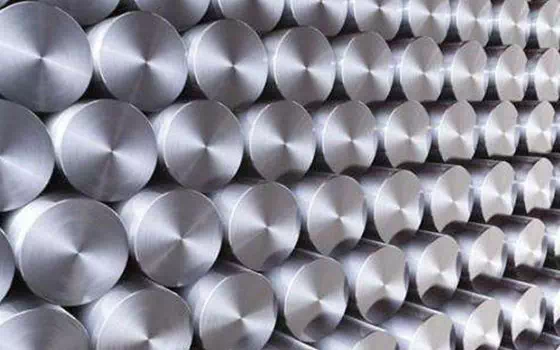Welcome to Zhishang Steel Co., Ltd.
TEL: (Gavin) +86-15665898999 | Email : info@zhishangsteel.com

Carbon is the most important factor determining the mechanical properties of steel, with the increase of carbon content, the hardness will increase, while the plasticity and toughness will decrease. When the carbon content reaches 0.77%, the strength will increase with the further increase of carbon content. However, when the carbon content exceeds 1.0%, the intensity decreases.
According to the different carbon content, carbon steel can be divided into three types: low carbon steel, medium carbon steel and high carbon steel. The carbon content of low carbon steel is less than or equal to 0.25%, the carbon content of medium carbon steel is between 0.25% and 0.60%, and the carbon content of high carbon steel is greater than 0.60%.
Steel production is a costly and inefficient process. Today, however, steel, with its low price and reliable properties, is one of the most used materials in the world, and it plays an integral role in construction, manufacturing, and People's Daily lives. It can be said that steel is the material basis of modern society.
Steel is an iron-carbon alloy with a carbon content of less than 2%. Depending on the composition, steel can be divided into carbon steel and alloy steel. According to the different properties and uses, steel can be divided into structural steel, tool steel and special performance steel.
When the steel is quenched, it will become very brittle, and due to the stress generated during the quenching process, the steel may break when it is subjected to a slight impact. To eliminate this brittleness, a tempering treatment method can be used. Tempering is the process of reheating steel pieces to the appropriate temperature or color and then cooling them quickly. Although tempering will make the steel slightly less hard, it can increase the toughness of the steel and reduce its brittleness.
The formation of carbon nuclei requires a near-simultaneous triple collision of alpha particles (helium nuclei) in a giant nucleus or supergiant, a process known as the triple helium process. This fusion reaction can occur rapidly in the interior of a helium-rich star at temperatures exceeding 100 million degrees.
Similarly, this process occurs in older stars, where helium from proton-proton chain reactions and carbon-nitrogen-oxygen cycles accumulates in the core stars. When the hydrogen in the core has burned, the core will collapse until the temperature reaches the ignition point of helium combustion.
Carbon content is one of the most important elements in steel, which has a significant impact on the performance and use of steel. Different carbon content will lead to steel with different mechanical properties, heat treatment properties and corrosion resistance characteristics. Below we will explore in detail the effect of carbon content on steel properties.
First of all, the level of carbon content will directly affect the hardness and strength of steel. In general, steels with higher carbon content have higher hardness and strength, while steels with lower carbon content are relatively soft. This is because the carbon element in the crystal boundary can strengthen the atomic structure of the steel, so that it is more closely arranged, thereby increasing the hardness and strength of the steel. Therefore, in some application scenarios with high strength requirements, we often choose high carbon steel with high carbon content, such as auto parts, machinery and equipment.
Secondly, the carbon content also affects the heat treatment performance of the steel. Heat treatment refers to the heating, cooling and other treatment processes of steel to change its structure and properties. Different carbon content will lead to the change of phase transformation behavior and microstructure of steel during heat treatment. Steels with higher carbon content undergo faster phase change during heating and are easy to form martensitic structures, thus having higher hardness and strength. The steel with lower carbon content has a slower phase change rate during the heating process, and it is easier to form austenitic structure, so it has better plasticity and ductility. This provides more options for steel for different application scenarios.
In addition, the carbon content also has an impact on the corrosion resistance of steel. The interaction of carbon with other elements in steel affects the corrosion resistance of steel. Generally speaking, steels with lower carbon content have better corrosion resistance. This is because the lower carbon content will reduce the formation of carbides in the steel, thus reducing the corrosion tendency of the steel. Therefore, in some cases requiring higher corrosion resistance, we usually choose low carbon steel or stainless steel with lower carbon content.
In summary, the carbon content has an important effect on the properties of steel. Steel with different carbon content has different hardness, strength, heat treatment performance and corrosion resistance characteristics. When using steel, we need to choose the appropriate steel according to the specific application scenario and requirements. I hope the above content can help you understand the effect of carbon content on steel properties.

Zhishang Steel has always been a pioneer in custom steel and special supplies, and has been recognized for its efforts in enhancing work efficiency and product quality. In addition to ISO9001:2015 certification, we also adhere to strict quality policies and proprietary procedures. If you have any questions, please contact us to provide the best type of product solution for your pre-painted, coil coating metal process, we will closely support after-sales service to ensure that your subsequent problems can be solved in a timely manner, if you have any questions, please send email to info@zhishangsteel.com, we look forward to serving you.

Zhishang Steel, specializing in domestic steel products trade, warehousing, processing and other services. The team has four service teams: Shandong Zhishang Steel Co., LTD., Shandong Zhiyiheng Trading Co., LTD., Tai 'an Zhishang Economic and Trade Co., LTD., Shandong Zhishang Steel Structure Co., LTD. Mainly engaged in steel coil, coated, stee···